Job Description
As a medical transcriptionist, your job is to work in medical transcription.
This entails listening to audio recordings of medical doctors and nurses.
The data that is recorded is part of patient records.
Along with maintaining confidentiality with patient records and health data, a medical transcriptionist is responsible for accurately typing out the information.
Therefore, some schooling and training are necessary to manage a job as a medical transcriptionist.
Duties
Daily tasks that are involved with being a medical transcriptionist include:
- Listen to records dictated by someone working in healthcare
- Transcribe by writing or typing the records accurately
- Interpret information for patient records using exam notes, discharge summaries, operative reports, etc.
- Edit drafts typed out automatically with speech recognition software
- Translate medical terms and abbreviations, including medical jargon
- Look for errors or missing data in patient records
- Provide a follow-up review for reports
- Send patient records and reports through electronic health record (EHR) systems
Salary
The national salary for a medical transcriptionist is $35,183 an average annually.
This applies to entry-level and trained medical transcriptionists.
The salary amount will vary according to how much training and level of education you have obtained in this profession.
Additionally, some states and regions are more in demand for medical transcriptionists.
Therefore, if you work in these places you are able to make more money in most cases.
In rural towns and areas with fewer patients and caseloads, expect to make less money due to a more lax workload.
Annually National Average Salary: $39,090
Average Annual Salary by State
| State | Avg. Annual Salary |
|---|---|
| Alabama | $40,090 |
| Alaska | $42,730 |
| Arizona | $36,480 |
| Arkansas | $33,610 |
| California | $43,610 |
| Colorado | $40,590 |
| Connecticut | $47,480 |
| Delaware | $43,350 |
| District of Columbia | $36,730 |
| Florida | $39,370 |
| Georgia | $31,910 |
| Hawaii | $47,460 |
| Idaho | $36,480 |
| Illinois | $35,890 |
| Indiana | $41,680 |
| Iowa | $41,050 |
| Kansas | $33,710 |
| Kentucky | $36,780 |
| Louisiana | $35,790 |
| Maine | $45,640 |
| Maryland | $40,010 |
| Massachusetts | $44,400 |
| Michigan | $34,790 |
| Minnesota | $50,720 |
| Mississippi | $35,820 |
| Missouri | $34,490 |
| Montana | $42,490 |
| Nebraska | $35,810 |
| Nevada | $40,350 |
| New Hampshire | $38,120 |
| New Jersey | $44,180 |
| New Mexico | $33,500 |
| New York | $40,610 |
| North Carolina | $32,360 |
| North Dakota | $44,020 |
| Ohio | $37,220 |
| Oklahoma | $31,490 |
| Oregon | $43,200 |
| Pennsylvania | $37,720 |
| Rhode Island | $40,630 |
| South Carolina | $36,030 |
| South Dakota | $43,970 |
| Tennessee | $36,990 |
| Texas | $36,270 |
| Utah | $37,590 |
| Virginia | $38,690 |
| Washington | $45,660 |
| West Virginia | $34,940 |
| Wisconsin | $44,710 |
| Wyoming | $49,260 |
| Puerto Rico | $28,070 |
Annual Average Salary: Top 5 States
The top earning state in the field is Minnesota, where the average salary is $50,720.
These are the top 5 earning states in the field:
* Employment conditions in your area may vary.
How to Become a Medical Transcriptionist: Step-by-Step
Step 1 Training for Medical Transcriptionists
To become a medical transcriptionist, start with the proper training.
This is typically provided by a post-secondary training facility, technical college, or university.
You may also find training online to prepare you to be a paid medical transcriptionist.
The 100 percent online training for medical transcriptionists will suffice to prepare a student for a certification exam in this area of expertise.
By training online, you may be able to save time and money on getting the information you need to become a real medical transcriptionist.
Step 2 Skills Needed to Be a Medical Transcriptionist
The next step beyond paperwork and reading how to be a medical transcriptionist is hands-on training.
You need to find a clinical practice or an apprenticeship program.
This will train you to become a medical transcriptionist in the field.
Skills involved with medical transcription include listening and reciting back information.
This requires that you be able to pay attention and have good concentration skills.
Other skills you need to have when working as a medical transcriptionist include working medical knowledge and vocabulary.
Oftentimes, medical transcriptionists will come across a newfangled topic or word that is unique to a patient’s records.
Being able to decipher this term as a real concept, and not something that is misspelled is part of the job as a medical transcriptionist.
Also, most medical transcriptionists work alone or remotely and receive data through tapes or audio recordings on the computer.
Therefore, it is important to be a self-starter and self-motivator when working in this field.
Speaking of computers, you must be able to use a computer and software that will help you transcribe documents and patient records.
Step 3 Certifications for Medical Transcription
The certifications that you can earn in medical transcription will help you to secure job opportunities.
In fact, most employers will expect you to be certified as a medical transcriptionist in some way.
There are many certification programs available both statewide and nationally.
Choose a medical transcription certification that you can pass with your training.
The certification exams, also known as boards, are extensive and lengthy.
That is why you need to consider a training program before you attempt to sit for these exams.
You must be trained in a medical transcriptionist program in order to be ready to successfully pass a board exam as a medical transcriptionist professional.
There are two main certifications that are afforded by medical transcription organizations–Certified Healthcare Documentation Specialist and Registered Healthcare Documentation Specialist.
These two specialist agencies offer certification that is supported by the Association for Healthcare Documentation Integrity (AHDI).
Start with the AHDI and these two organizations when deciding which certification in medical transcriptionist is right for your career goals.
You do not have to have multiple certifications.
In fact, only one certification is necessary if you are applying for a job as a medical transcriptionist in the healthcare industry.
Step 4 Finding a Job as a Medical Transcriptionist
Getting hired as a medical transcriptionist is the final step in becoming a medical transcriptionist.
You have to apply to a reputable doctor’s office, medical clinic, or health department where a medical transcriptionist is needed.
Showcase your talents and skills in your resume.
Make sure to include a copy of your medical transcriptionist certificate to prove you are skilled in this area.
Popular Programs
Education
The education process for becoming a medical transcriptionist is clear-cut and shorter than some medical training programs.
You can train to become a transcriber for a medical office in eight months to a year.
This provides you with the necessary training you need to pass the certification exam.
You might also decide to pursue an associate’s degree or even a bachelor’s degree.
Keep in mind, that these are traditional schooling routes that will take at least two years, and for a bachelor’s degree, you will spend four years in school.
However, an associate’s degree in machine transcription will be the best route if you are planning on pursuing higher education or additional certification later in life.
Start with the two-year training program at a college and graduate with an associate’s degree in medical transcriptionist.
From there, you are eligible to enter a bachelor’s degree tract where you can advance your skills in this field.
Other jobs that are available to individuals with a medical transcription background include court clerks, receptionists, and secretaries.
Once accepted into a program to become a medical transcriptionist, training involves audio and listening skills, as well as typing skills.
You are expected to be able to convert voice-recorded reports and records into written texts.
These documents that are typed out become a part of the patient’s medical records.
Medical records are protected by HIPAA, the Health Insurance Portability and Accountability Act of 1996.
In order to be able to do your job with accuracy, you must follow the HIPAA regulations and rules regarding patient rights and confidentiality of health information.
Medical transcriptionists are eligible to graduate from a program in this healthcare field once they can successfully transcribe medical documents.
This is not a common area of employment and the skills are unique to transcriptionists.
Therefore, by going to school to become a transcriptionist in medical texts, you are setting yourself up for success in the workforce.
The skills of a medical transcriptionist are in demand by doctors and nurses who may not have the best handwriting or time to transcribe their own information.
In fact, for HIPAA records, medical transcriptionists are hired to provide the ultimate in professionalism when handling patient data.
This protects the rights and privacy of patients and their personal records, as well as the compliance of the health care agency and office.
Video About The Career
Licensing & Certification
To become a medical transcriptionist, you most likely need to be certified.
Passing a certification exam as a medical transcriptionist will set you up for success in this career.
However, you may also need to be licensed to become a paid medical transcriptionist.
The licensing is not required in all 50 states for you to seek gainful employment.
However, if you are able to get a license in your state as a medical transcriptionist, this will greatly increase your chances of getting hired.
The certification process is the most streamlined way to become a medical transcriptionist.
You are able to have a certificate that is recognized by employers and the HIPAA to showcase your talents and abilities.
In order to be eligible for certification in this area, you will have to practice in the field.
Hands-on practicum hours are required in order to be eligible to sit for the board exams and to be certified.
First, you have to decide which pathway you want to pursue when it comes to getting certified as a medical transcriptionist.
There are two certificates available– Certified Healthcare Documentation Specialist (CHDS) and Registered Healthcare Documentation Specialist (RHDS).
These offer unique opportunities in the workforce based on the direction you want to take with your career.
The pathway of Certified Healthcare Documentation Specialist is the easiest way to get certified in medical transcription.
All you need to do is apply online and take the exam online.
However, if you want to pursue a Registered Healthcare Documentation Specialist certification, this requires you to have at least two years of work experience as a medical transcriptionist.
Generally, new medical transcriptionists will be CHDS certified and work under this certification at the onset of their career.
Then, with experience and over time, medical transcriptionists become eligible to sit for the RHDS board exam.
This advanced level of certification leads to better job opportunities that pay more money.
Average Training Program Duration: 0-6 Months
Job Outlook
According to the US Bureau of Labor Statistics (BLS), the workforce of medical transcriptionists is in decline.
There is a negative job outlook for medical transcribing of -7 percent for this career.
This is based on a timeline from 2020 to 2030.
Yet even though there are fewer new jobs for medical transcriptionists, those positions that are already set up will need to be filled in the coming years.
This is due to the retirement of existing medical transcriptionists.
Employment Growth Projection: -7%
2020
2030
That's a higher than average projected growth of -3,900
Should You Become a Medical Transcriptionist?
Overall Satisfaction: High

The job satisfaction for a medical transcriptionist is good for remote workers.
If you like to work alone or in a remote location, this is a good job for satisfying that requirement.
Average Salary: Medium

The salary for a medical transcriber is in the middle range for a family.
This will allow you to be in a middle-class household based on your income level.
This salary is average for most entry-level healthcare professions.
You can also increase your salary potential by earning certifications and through advanced skill training.
Job Growth Outlook: Low

The job outlook and growth for medical transcription are not positive at this time.
However, there remains the need to fill jobs left open by retirees in this field.
Education Duration: 0-6 Months

Expect to spend less than a year earning a certificate as a medical transcriptionist.
Advanced education taking two to four years is also available if you want to get a degree.
Diplomas may also be offered at some schools that train medical transcriptionists.
Personal Skills Needed

The most necessary personal skills needed by a medical transcriptionist are listening, typing, and paying concentrated attention when alone.
You have to be a self-starter and be able to work independently to do this job successfully.
Frequently Asked Questions
How long do you have to go to school to become a medical transcriptionist?
You need to go to school for at least eight months to become a medical transcriptionist.
However, some programs are set up for two to four years of training in order to be skilled.
How much money does a medical transcriptionist make a year?
The salary for a medical transcriptionist is about $35,000 a year, depending on the location, workplace, and benefits package.
Make sure to factor in health insurance and other perks you earn as a medical transcriptionist for a future employer.
For example, some medical offices might offer free coffee with employment.
What kind of education do you need to be a medical transcriptionist?
The education needed to be a medical transcriptionist starts with a post-secondary institution, either online or on a college campus.
This is not a field in which you need a lot of medical knowledge, so going to medical school is not necessary.
However, you do have to learn from an online school or traditional institution in order to be eligible for boards.
Are medical transcriptionists in high demand?
Medical transcription is a skill that is needed in certain areas of the medical industry.
Physicians in private practice, as well as nurses and doctors in busy hospitals, all need help transcribing patient data and records.
This is where medical transcriptionists are in the most demand.
However, in general, the industry of medical transcriptionists is in decline by 7 percent through 2030.
What skills do you need to have to be a medical transcriptionist?
To be successful as a medical transcriptionist, you must be able to type out documents based on audio recordings.
This is a very tactile job that involves hands-on activities.
Therefore, you need to be able to sit for long periods of time without falling asleep.
Listening to long, drawn-out recordings by medical staff about patients can also be draining.
This is where having the ability to concentrate and stay alert is key.
Medical Transcriptionist Resources
- 16 Pros and Cons of Being a Medical Transcriptionist
- Best Online Medical Transcriptionist Training Programs
- How Much Does It Cost to Become a Medical Transcriptionist? (School & Certification Costs)
More Medical Careers
| Career | |
|---|---|
 | Certified Nursing Assistant Working as a Certified Nursing Assistant is an entry-level role that will give you hands-on experience when you are ready to take the next step in your medical career. |
 | Dental Assistant Dental assistants help dentists to provide patient care, keep records, and care for the dental equipment. |
 | Dental Hygienist Dental hygienists take care of cleaning teeth to promote hygiene and help avoid cavities and gum problems. |
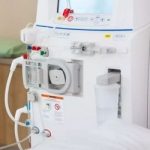 | Dialysis Technician Dialysis technicians maintain and monitor dialysis equipment, and also act as primary caregivers for patients undergoing dialysis treatment. |
 | Dog Groomer Dog groomers attend to grooming dogs, usually at dog salons or big pet-related chain stores. |
 | Healthcare Administrator Healthcare administrators – also known as healthcare executives or health services managers – are responsible for the planning, direction, and coordination of medical and health services. |
 | Home Health Aide Home health aides provide home care to individuals who require assistance in their day-to-day living. |
 | Licensed Practical Nurse (LPN) Licensed Practical Nurses provide basic nursing care to patients and work with Registered Nurses and Doctors. |
 | Medical Assistant Medical assistants support the work of physicians, nurses, and other health professionals. |
 | Medical Biller and Coder Medical billers and coders manage, organize, and code various health information data. |
 | Medical Technologist Medical laboratory technologists collect bodily samples and conduct tests to analyze those samples. |
 | Nutritionist As a Nutritionist, you’ll be tasked with creating meal plans, counseling, and understanding dietary restrictions for all types of clients. |
 | Patient Access Representative The work involves helping people to orient themselves to the space and everything that is going on. |
 | Patient Care Technician Patient care techs work directly with patients helping them with daily activities and assist the medical staff by measuring and monitoring the patients' vital signs among other tasks. |
 | Pharmacy Technician Pharmacy technicians provide patients with medications through prescription or over the counter. |
 | Phlebotomist As a Phlebotomist, it will be your responsibility to take blood samples from patients and send them to the lab for further testing. |
 | Physical Therapist Assistant Physical therapist assistants provide physical therapy services to patients and aide to physical therapists. |
 | Professional Recovery Coach A professional recovery coach is a life coach who works with someone during their addiction recovery process. |
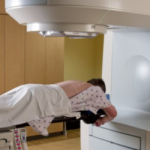 | Radiation Therapist Allied health provisional who specializes in radiation oncology treatments. |
 | Registered Health Information Technician Registered Health Information Technician (RHIT) help store and verify accuracy of health records as well as analyze patient data. |
 | Registered Nurse (RN) Registered Nurses provide hands-on patient care in various settings, mainly hospitals, and clinics. |
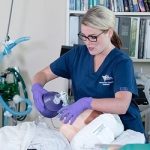 | Respiratory Therapist Respiratory therapists treat and care for patients who experience breathing difficulties. |
 | Sterile Processing Technician A sterile processing technician is a healthcare professional who is responsible for preparing, sterilizing, maintaining, packaging, and storing medical tools and equipment used in surgical and other medical procedures. |
 | Surgical Technologist Surgical technologists – also known as operating room techs – prepare operating rooms and assist doctors and nurses during surgical procedures. |
 | Vet Office Manager Veterinary office managers work to make sure that the daily operations run smoothly and efficiently at veterinary hospitals or veterinary clinics. |
 | Veterinary Assistant Veterinary Assistants work closely with Veterinarians to handle routine animal care. |
 | Veterinary Technician Veterinary Technicians assist veterinarians as well as diagnosing and treating animals, mostly in private clinics. |
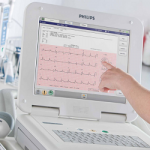 | EKG Technician EKG technicians test and monitor the cardiovascular system. |
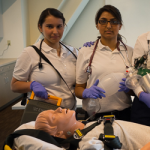 | EMT Trained emergency medical technician that arrives at the scene to provide medical services such as resuscitation. |
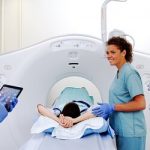 | MRI Technologist MRI Technologists use a machine to scan the body and create a detailed image of the inside for doctors to analyze. |
 | Optician Opticians are technicians and salespersons at the same time who spends most of their day talking to customers, reading prescriptions written by doctors, and dispensing glasses and lenses. |
 | Ultrasound Technician Ultrasound technicians aid physicians in monitoring and diagnosing patients through the use of ultrasonic imaging technology. |
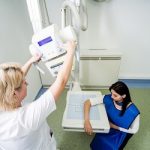 | X-Ray Technician X-Ray Technicians are medical imaging professionals who use technology to visualize the inside of our bodies. |













